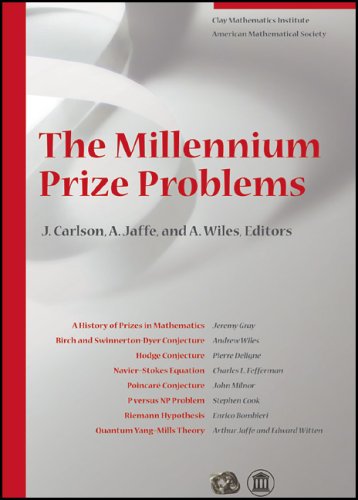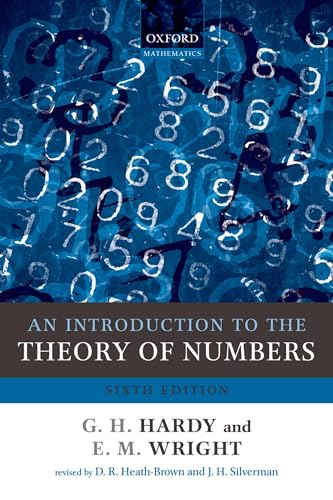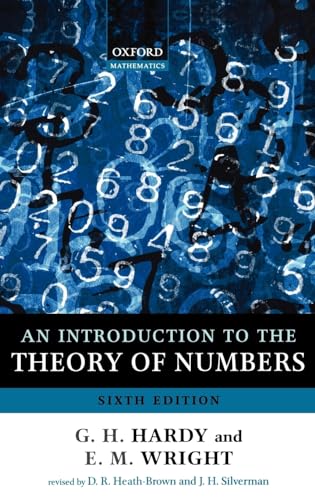wiles andrew (11 Ergebnisse)
Suchfilter
Produktart
- Alle Product Types
- Bücher (11)
- Magazine & Zeitschriften (Keine weiteren Ergebnisse entsprechen dieser Verfeinerung)
- Comics (Keine weiteren Ergebnisse entsprechen dieser Verfeinerung)
- Noten (Keine weiteren Ergebnisse entsprechen dieser Verfeinerung)
- Kunst, Grafik & Poster (Keine weiteren Ergebnisse entsprechen dieser Verfeinerung)
- Fotografien (Keine weiteren Ergebnisse entsprechen dieser Verfeinerung)
- Karten (Keine weiteren Ergebnisse entsprechen dieser Verfeinerung)
- Manuskripte & Papierantiquitäten (Keine weiteren Ergebnisse entsprechen dieser Verfeinerung)
Zustand Mehr dazu
- Neu (7)
- Wie Neu, Sehr Gut oder Gut Bis Sehr Gut (1)
- Gut oder Befriedigend (2)
- Ausreichend oder Schlecht (Keine weiteren Ergebnisse entsprechen dieser Verfeinerung)
- Wie beschrieben (1)
Einband
Weitere Eigenschaften
- Erstausgabe (2)
- Signiert (Keine weiteren Ergebnisse entsprechen dieser Verfeinerung)
- Schutzumschlag (Keine weiteren Ergebnisse entsprechen dieser Verfeinerung)
- Angebotsfoto (2)
Sprache (2)
Preis
- Beliebiger Preis
- Weniger als EUR 20 (Keine weiteren Ergebnisse entsprechen dieser Verfeinerung)
- EUR 20 bis EUR 45
- Mehr als EUR 45
Gratisversand
Land des Verkäufers
Verkäuferbewertung
-
The Millennium Prize Problems
Verlag: American Mathematical Society, 2006
ISBN 10: 082183679X ISBN 13: 9780821836798
Sprache: Englisch
Anbieter: ThriftBooks-Atlanta, AUSTELL, GA, USA
Hardcover. Zustand: Very Good. No Jacket. Former library book; May have limited writing in cover pages. Pages are unmarked. ~ ThriftBooks: Read More, Spend Less.
-
The Millennium Prize Problems
Verlag: American Mathematical Society, 2023
ISBN 10: 1470474603 ISBN 13: 9781470474607
Sprache: Englisch
Anbieter: Revaluation Books, Exeter, Vereinigtes Königreich
EUR 37,55
EUR 11,39 für den Versand von Vereinigtes Königreich nach USAAnzahl: 1 verfügbar
In den WarenkorbPaperback. Zustand: Brand New. 165 pages. 9.92x7.09x0.63 inches. In Stock.
-
Hardcover. Zustand: Sehr gut. 1. Auflage. Z : 311 pages, 26 x 31 cm, clothbound.
-
Oxford Handbook of Clinical Medicine and Oxford Handbook of Clinical Specialties
Anbieter: Revaluation Books, Exeter, Vereinigtes Königreich
EUR 66,00
EUR 14,24 für den Versand von Vereinigtes Königreich nach USAAnzahl: 1 verfügbar
In den WarenkorbPaperback. Zustand: Brand New. pck edition. 1792 pages. 2.48x4.13x7.28 inches. In Stock.
-
An Introduction to the Theory of Numbers
Anbieter: Revaluation Books, Exeter, Vereinigtes Königreich
EUR 77,18
EUR 14,24 für den Versand von Vereinigtes Königreich nach USAAnzahl: 1 verfügbar
In den WarenkorbPaperback. Zustand: Brand New. 6th edition. 621 pages. 8.75x6.00x1.50 inches. In Stock.
-
Northern light : photographs by David Octavius Hill and Robert Adamson from the University of St. Andrews
Verlag: Middletown, Conn. : Davison Art Center, Wesleyan University, 2003
Anbieter: Joseph Burridge Books, Dagenham, Vereinigtes Königreich
EUR 29,34
EUR 30,76 für den Versand von Vereinigtes Königreich nach USAAnzahl: 1 verfügbar
In den WarenkorbSoft cover. Zustand: New. 64 pages : illustrations ; 26 cm. Catalogue of an exhibition held Apr. 1 to May 25, 2003.
-
Oxford Handbook of Clinical Medicine and Oxford Handbook of Clinical Specialties
Anbieter: Revaluation Books, Exeter, Vereinigtes Königreich
EUR 110,53
EUR 14,24 für den Versand von Vereinigtes Königreich nach USAAnzahl: 2 verfügbar
In den WarenkorbPaperback. Zustand: Brand New. pck edition. 1792 pages. 2.48x4.13x7.28 inches. In Stock.
-
An Introduction to the Theory of Numbers
Anbieter: Revaluation Books, Exeter, Vereinigtes Königreich
EUR 129,82
EUR 14,24 für den Versand von Vereinigtes Königreich nach USAAnzahl: 2 verfügbar
In den WarenkorbPaperback. Zustand: Brand New. 6th edition. 621 pages. 8.75x6.00x1.50 inches. In Stock.
-
An Introduction to the Theory of Numbers (Oxford Mathematics)
Anbieter: Books From California, Simi Valley, CA, USA
Hardcover. Zustand: Very Good.
-
Oxford Handbook of Clinical Medicine, Oxford Handbook of Clinical Specialties, and Oxford Handbook for Medical School Pack
Anbieter: Revaluation Books, Exeter, Vereinigtes Königreich
EUR 166,72
EUR 17,09 für den Versand von Vereinigtes Königreich nach USAAnzahl: 2 verfügbar
In den WarenkorbPaperback. Zustand: Brand New. pck edition. 2968 pages. 7.40x4.45x4.09 inches. In Stock.
-
Modular elliptic curves and Fermat's Last Theorem. [with:] Ring-theoretic properties of certain Hecke algebras, pp. 443-551 & 553-572 in: Annals of Mathematics, Vol. 141, No. 3, May 1995
Verlag: Princeton University Press, Princeton, 1995
Anbieter: SOPHIA RARE BOOKS, Koebenhavn V, Dänemark
Erstausgabe
First edition. THE PROOF OF FERMAT'S LAST THEOREM. First edition, journal issue, of his proof of Fermat's Last Theorem, which was perhaps the most celebrated open problem in mathematics. In a marginal note in the section of his copy of Diophantus' Arithmetica (1621) dealing with Pythagorean triples (positive whole numbers x, y, z satisfying x2 + y2 = z2 of which an infinite number exist), Fermat stated that the equation xn + yn = zn, where n is any whole number greater than 2, has no solution in which x, y, z are positive whole numbers. Fermat followed this assertion with what is probably the most tantalising comment in the history of mathematics: 'I have a truly marvellous demonstration of this proposition which this margin is too narrow to contain.' Fermat believed he could prove his theorem, but he never committed his proof to paper. After his death, mathematicians across Europe, from the enthusiastic amateur to the brilliant professional, tried to rediscover the proof of what became known as Fermat's Last Theorem, but for more than 350 years none succeeded, nor could anyone disprove the theorem by finding numbers x, y, z which did satisfy Fermat's equation. When the great German mathematician David Hilbert was asked why he never attempted a proof of Fermat's Last Theorem, he replied, "Before beginning I should have to put in three years of intensive study, and I haven't that much time to squander on a probable failure." Soon after the Second World War computers helped to prove the theorem for all values of n up to five hundred, then one thousand, and then ten thousand. In the 1980's Samuel S. Wagstaff of the University of Illinois raised the limit to 25,000 and more recently mathematicians could claim that Fermat's Last Theorem was true for all values of n up to four million. But no general proof was found until 1995. "Between 1954 and 1986 a chain of events of occurred which brought Fermat's Last Theorem back into the mainstream. The incident which began everything happened in post-war Japan, when Yutaka Taniyama and Goro Shimura, two young academics, decided to collaborate on the study of elliptic curves and modular forms. These entities are from opposite ends of the mathematical spectrum, and had previously been studied in isolation. "Elliptic curves, which have been studied since the time of Diophantus, concern cubic equations of the form: y2 = (x + a).(x + b).(x + c), where a, b and c can be any whole number, except zero. The challenge is to identify and quantify the whole solutions to the equations, the solutions differing according to the values of a, b, and c. "Modular forms are a much more modern mathematical entity, born in the nineteenth century. They are functions, not so different to functions such as sine and cosine, but modular forms are exceptional because they exhibit a high degree of symmetry. For example, the sine function is slightly symmetrical because 2? can be added to any number, x, and yet the result of the function remains unchanged, i.e., sin x = sin (x + 2?). However, for modular forms the number x can be transformed in an infinite number of ways and yet the outcome of the function remains unchanged, hence they are said to be extraordinarily symmetric "Despite belonging to a completely different area of the mathematics, Shimura and Taniyama began to suspect that the elliptic curves might be related to modular forms in a fundamental way. It seemed that the solutions for any one of the infinite number of elliptic curves could be derived from one of the infinite number of modular forms. Each elliptic curve seemed to be a modular form in disguise. This apparent unification became known as the Shimura-Taniyama conjecture, reflecting the fact that mathematicians were confident that it was true, but as yet were unable to prove it. The conjecture was considered important because if it were true problems about elliptic curves, which hitherto had been insoluble, could potentially be solved by using techniques developed for modular forms, and vice versa "Even though the Shimura-Taniyama conjecture could not be proved, as the decades passed it gradually became increasingly influential, and by the 1970s mathematicians would begin papers by assuming the Shimura-Taniyama conjecture and then derive some new result. In due course many major results came to rely on the conjecture being proved, but these results could themselves only be classified as conjectures, because they were conditional on the proof of the Shimura-Taniyama conjecture. Despite its pivotal role, few believed it would be proved this century. "Then, in 1986, Kenneth A Ribet of the University of California at Berkeley, building on the work of Gerhard Frey of the University of Saarlands, made an astonishing breakthrough. He was unable to prove the Shimura-Taniyama conjecture, but he was able to link it with Fermat's Last Theorem. The link occurred by contemplating the unthinkable what would happen if Fermat's Last Theorem was not true? This would mean that there existed a set of solutions to Fermat's equation, and therefore this hypothetical combination of numbers could be used as the basis for constructing a hypothetical elliptic curve. Ribet demonstrated that this elliptic curve could not possibly be related to a modular form, and as such it would defy the Shimura-Taniyama conjecture. Running the argument backwards, if somebody could prove the Shimura-Taniyama conjecture then every elliptic curve must be related to a modular form, hence any solution to Fermat's equation is forbidden to exist, and hence Fermat's Theorem must be true. If somebody could prove the Shimura-Taniyama conjecture, then this would immediately imply the proof of Fermat's Last Theorem. By proving one of the most important conjectures of the twentieth century, mathematicians could solve a riddle from the seventeenth century. "The Shimura-Taniyama conjecture had remained unproven since the 1950s and so there was little optimism that it was a r.










![Bild des Verkäufers für Modular elliptic curves and Fermat's Last Theorem. [with:] Ring-theoretic properties of certain Hecke algebras, pp. 443-551 & 553-572 in: Annals of Mathematics, Vol. 141, No. 3, May 1995 zum Verkauf von SOPHIA RARE BOOKS](https://pictures.abebooks.com/inventory/md/md32209776005.jpg)